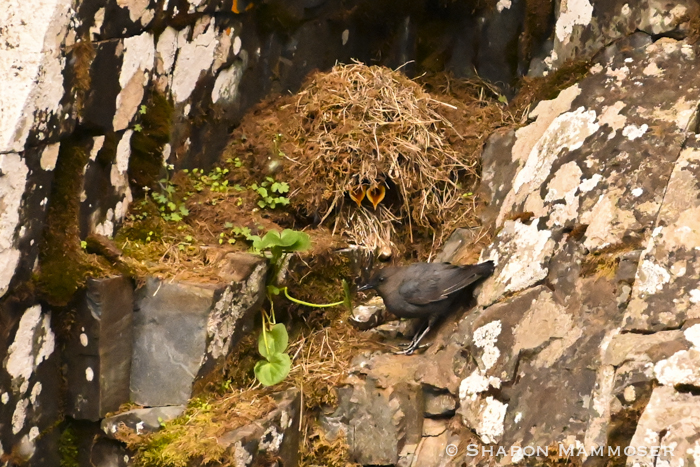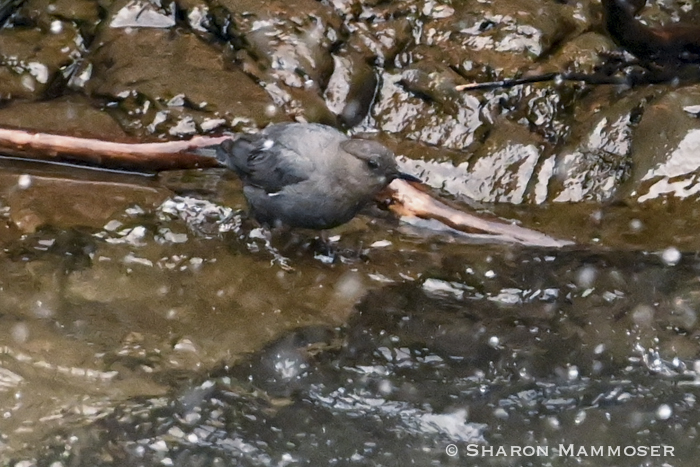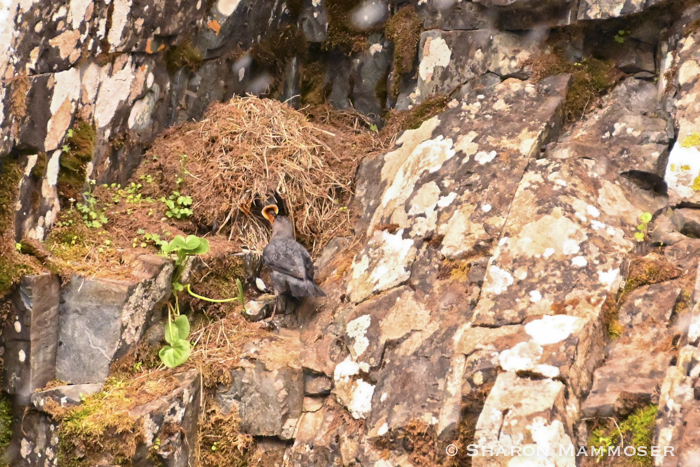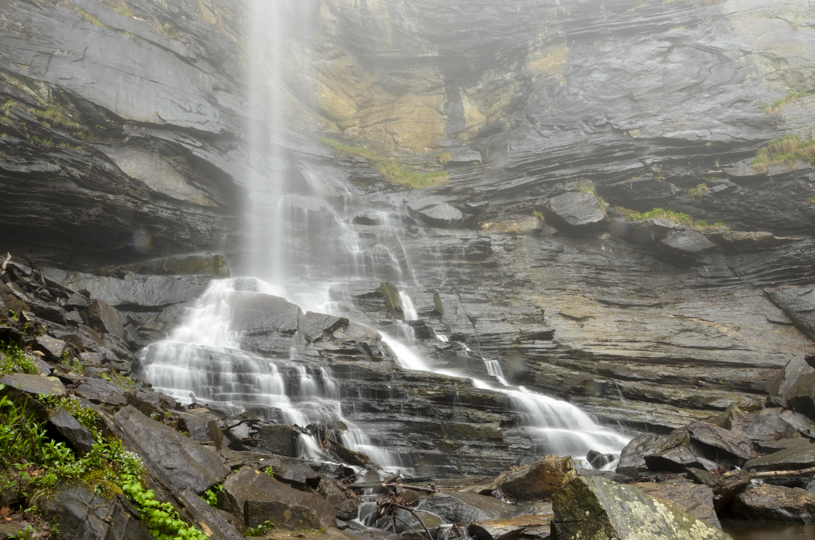If you’ve ever had the chance to watch the bird from puzzler #220, you would probably echo my opinion of this bird–which is that it’s amazing! It is an American Dipper, Cinclus mexicanus, a bird whose range is parts of the western United States, from northern California, up into Canada and into Alaska and then in pockets in Colorado, Utah, Wyoming, Idaho, and Montana. American Dippers are medium sized songbirds that have white eyelids and stocky gray/brown bodies. They can be found from sea level all the up to as high as 12,000 feet!

A friend of mine shared a story with me about her first encounter with this bird. She and her husband were somewhere out west and were watching this drab, gray bird hopping along the side of stream when all of a sudden it disappeared under the fast moving water. “But wait!” She thought, “where did the bird go? Why did he hurl himself into such fast-moving water?”

American Dippers, also known as water ouzels, are fun to watch, both when they are hunting and when they are feeding their young. They require rushing, unpolluted water found in streams and rivers with rocky bottoms. They will walk along the shore, bobbing their head, and then, without warning, throw themselves into the rushing water where underwater, they will look for aquatic insects and their young including mayflies, dragonflies, damselflies, worms, midges, mosquitoes, and even small fish. Most of their food comes from underwater. Like fish, amphibians, and reptiles, Dippers (as well as owls and bald eagles) have a third eyelid, called a nictitating membranes that help the birds see well underwater.

American Dipper nests are amazing engineering marvels, a ball of grass, moss and bark that can be larger than a soccer ball and is almost always on a ledge or in a crevice that is above the water enough so if the stream floods, the nest will survive. They will even build their nests behind waterfalls! According to Cornell Lab of Ornithology, “Males and females may work together to build the ball-like nest, often in freezing temperatures. Materials are dipped into water before being weaved into two layers: one, an outer shell, 8-10 inches in diameter, made of moss, and the other an inner chamber with a woven cup, 2-3 inches in diameter, made of grass, leaves, and bark. Once the nest is finished, the mossy shell absorbs moisture and the coarse grass keeps the inside dry.”
I hope you get to watch one someday, feeding young beside a waterfall! They follow the curve of the river as they return to their nest, not usually taking shortcuts overland, but instead remaining a few feet above the water. They fly right to their nest, feeding the screaming, orange-beaked babies and then disappearing for another run.
Since we’re on the subject of birds, let’s do another one–this puzzler a much smaller bird with a gorgeous copper colored back.

